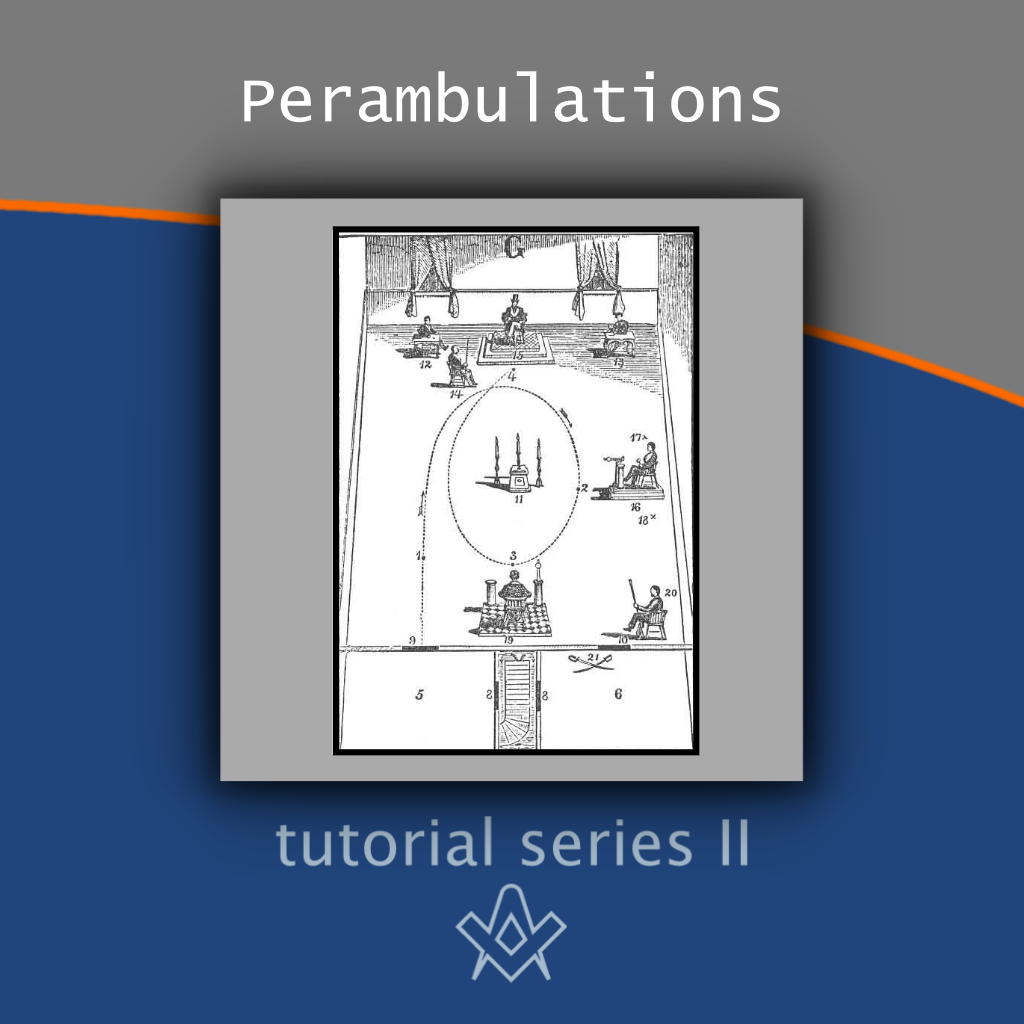Reflecting on the time I was a Deacon I remember that I was quite formal and military in the way I escorted the candidate around the lodge in each of the degrees.
As I was from a service background I thought that such formality was expected and gave dignity to the ritual.
Stepping off with the left foot and almost slow marching around the periphery of the Lodge floor, straight back, wand in hand, held delicately between my fingers.
That badge of office signalling the arrival of the ‘Messenger’ and the importance of his message. Upon reflection was that the right attitude to have?
When we look at the ritual book the deacons are told to ‘perambulate’ with the candidate.
So what does this really mean? As always I look to the dictionary to tell me the meaning of words and ‘perambulate’ is:
The Cambridge Dictionary – To walk about for pleasure.
Collins Dictionary – To walk around in order to inspect.
Let’s take these definitions and apply them to our ritual.
Video Presentation
To walk about for pleasure.
When the candidate is escorted around the Lodge floor what is happening?
He is being guided along the chequered pavement which signifies his chequered existence upon this earth by a friend who will see that he does not come to harm and someone in whom the candidate has put his trust.
The steps taken are therefore steps of friendship and should be considered as such by the Deacons.
It is important that prior to the ceremony the Deacons should introduce themselves to the candidate to put his mind at ease and be that friendly, trusted, walking companion.
To walk around in order to inspect.
There are two aspects to this definition when applying it to our ritual. The first is for the brethren to inspect the candidate whilst on his journey to ensure that he is;
“properly prepared and a fit and proper person to be made a Mason – a Craftsman – a Master Mason”.
The other aspect is for the candidate to examine his boundaries. The boundaries of good and evil.
In English Law the historical meaning to ‘perambulate’ was to establish the ‘bounds’ of the land by walking around it and so that law has been ritualized in our ceremonies.
Why walk around the Lodge clockwise?

Circumambulate
IMAGE LINKED: wikimedia Attribution 4.0 International (CC BY 4.0)
According to Bernard E. Jones in his book ‘Freemasons Guide and Compendium’ we should not use the word perambulation for in Latin that means “to walk through”, we should use the word circumambulation which in Latin means ‘walking all around’.
How language has changed from the original Latin to that of English Law.
However, Jones goes onto inform us that one of the most ancient rites going back thousands of years was to circumambulate ‘sunwise’, that is in the direction of the sun, or clockwise. In religions of various ages the practice of walking around a sacred shrine three times in a ‘sunwise’ direction was closely observed.
Durandus, a French Benedictine monk and author in the thirteenth century, stated that such ‘circumambulation’ was being practiced by bishops of the Christian church in his time.
So the rite of ‘walking all around’ has been adopted by Freemasonry and is a rite that ‘stretches back to probably the dawn of civilisation’.
During the candidate’s perambulation’ of the Lodge he is stopped at each corner to make a turn and he then starts again stepping off with the left foot making each side of the Lodge floor separate and distinct.
On each corner, on the Lodge carpet, is illustrated a tassel. Each of the four tassels represent a virtue.
Those virtues are:
“Prudence to direct you, Fortitude to support you, Temperance to chasten and Justice to be the guide to all your actions”.
The candidate is guided in a straight and undeviating line between each of these virtues which symbolizes that ‘straight and undeviating line of conduct laid down for our pursuit in the VSL’.

The Four Cardinal Virtues of Freemasonry – Temperance, Prudence, Fortitude and Justice
IMAGE LINKED: wikimedia Attribution 4.0 International (CC BY 4.0)
Prudence is “the ability to govern and discipline oneself by the use of reason. Shrewdness in the management of affairs. Skill and good judgement in the use of resources and cautious or circumspect as to danger or risk”. Merriam -Webster Dictionary
Fortitude is “the strength of mind that enables a person to encounter danger or bear pain or adversity with courage”. Merriam -Webster Dictionary
Temperance is “moderation in action, thought or feeling”. Merriam -Webster Dictionary
Justice is “fairness in the way people are dealt with and a conformity to truth, fact or reason”. Merriam -Webster Dictionary
It is, therefore, of the utmost importance that the candidate is made aware of the reason for stopping at each corner at the earliest possible convenience so that he may understand the purpose of “squaring” the Lodge.
Why do Masons start off with their left foot?
There is much conjecture on this point and I have found no definitive answer. However, there is a paper written by Br. Georges L.C. Baekelmans and T. V. Srinivasan that gives four possible answers. I recommend you take time to read this paper.
Their first theory relates to the Fellowcraft ascending the winding staircase.
Starting off with his left foot and therefore ending up at the middle chamber with his left foot. Although a plausible reason Baekelman and Srinivasan dismissed it.
Their second theory was as a combative stance giving stability for the right hand to strike. They likened it to the combative Vedic Prayer:
Lead me from Ignorance to Wisdom.
Lead me from Darkness to Light.
Lead me from Mortality to Immortality.
Their third theory is given by Brother C. W. Leadbetter in his book ‘The Hidden Life in Freemasonry’.
He puts forward the concept that the left foot is nearest the heart and symbolizes ‘intuition’ and the right foot ‘the intellectual faculty’.
He goes on to say that in occult matters intuition always takes precedent over the reasoning process.
Their fourth and what they believe is a more genuine theory is taken from the ‘Book of the Dead’ relating to an occult group that worships the Ancient Egyptian Gods and is explained thus:
“The left foot is advanced to represent the power of Isis. Isis is also known as the one to mark a new beginning.
The right foot is represented by Isis’s devine sister Nephthys, who stands for completion of action.”
Whichever is the right theory it is a great discussion point.
Each Lodge Preceptor will have his own way in which perambulations are made according to his own Lodge workings, but bear in mind the significance of why we do it.
A friendly walk as a guide with a Brother to establish his preparedness to advance further.
To accurately communicate a message given by the Worshipful Master and to establish the candidate’s moral boundaries.
So reflecting on my time as a Deacon, perhaps I was more concerned with the outward appearance than the friendship of the action.
Footnotes
Reference
Cambridge Dictionary.
Merriam-Webster Dictionary.
Collins Dictionary
Freemasons Compendium and Guide. Bernard E. Jones.
Lodge of Union No. 38 Ritual Book.
https://google.com/site/pittmacorg/foot-forward Br. Georges L.C. Baekelmans
Article by: Stephen J. Goulding
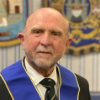
Stephen was initiated into Freemasonry in 1978 in Tylney Lodge No. 5856 (UGLE). He was Master in 1989 & 2004.
He was Master of the Lodge of Union 38 (UGLE) in 2018. He is also a PZ in the Holy Royal Arch and PM in the Mark Degree.
Stephen served 30 years in the Metropolitan Police Service (London, England) before going into education in 2000, where he became a college lecturer and a mentor for both the college and the University of Greenwich (London, England). Now retired, he teaches Tai Chi and Qigong in the community.
Facebook: Steve Goulding-Tai Chi West Sussex–Chi at Chi
Recent Articles: in this tutorial series
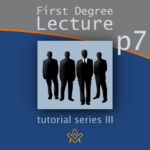 William Preston (1742 – 1818) gives his lectures in the form of a Catechism – questions and answers - and broken down into seven bite size chunks. This article is the first of the seven part series presented by Steve Goulding |
 William Preston (1742 – 1818) gives his lectures in the form of a Catechism – questions and answers - and broken down into seven bite size chunks. This article is the first of the seven part series presented by Steve Goulding |
 William Preston (1742 – 1818) gives his lectures in the form of a Catechism – questions and answers - and broken down into seven bite size chunks. This article is the first of the seven part series presented by Steve Goulding |
 William Preston (1742 – 1818) gives his lectures in the form of a Catechism – questions and answers - and broken down into seven bite size chunks. This article is the first of the seven part series presented by Steve Goulding |
 William Preston (1742 – 1818) gives his lectures in the form of a Catechism – questions and answers - and broken down into seven bite size chunks. This article is the first of the seven part series presented by Steve Goulding |
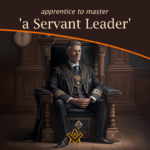 Apprentice to Master, “a Servant Leader”. Freemasonry is a learning platform used to improve a lifestyle which is morally, educationally and spiritually sound. To guide a person through life in order to be the best they can be. A Master, or ‘Servant Leader,’ develops those people in their care. They are someone who can guide others using the principles of Freemasonry - By Stephen J. Goulding |
 William Preston (1742 – 1818) gives his lectures in the form of a Catechism – questions and answers - and broken down into seven bite size chunks. This article is the second of the seven part series presented by Steve Goulding |
 William Preston (1742 – 1818) gives his lectures in the form of a Catechism – questions and answers - and broken down into seven bite size chunks. This article is the first of the seven part series presented by Steve Goulding |
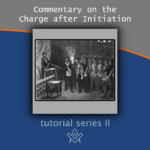 Commentary on the Third Degree Charge The Third Degree Charge invites the candidate to reflect on his life as both a ‘moral’ and ‘educated’ man, and to contemplate on what may be missing in his life. The ‘genuine secrets of a Master Mason’. |
 Commentary on the Second Degree Charge In the second degree we learn about being an educated man. Skilful, not only in the Craft itself but also how to communicate and manage others. This Commentary looks at the second degree charge in detail. |
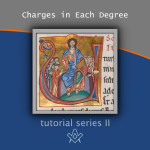 The ‘Old Charges’ have come down to us, containing the rules and regulations by which Lodges should be run and the moral and social standards to which each Lodge member should adhere. |
 Steps to the Making of a Master. The symbolism of each step of the winding staircase is to continue your personal development throughout your life, right up to your last breath in this world. |
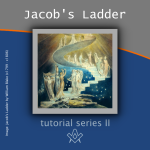 On the First Degree tracing board the most dominant feature is Jacob’s Ladder stretching from Earth to Heaven. Being straight, it is the shortest and quickest way to reach heaven, and being straight you can see the end goal. |
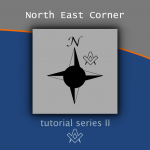 The North East Corner: A Lesson on Charity The ritual of the North East corner is a powerful piece of teaching. Let us examine that piece of ritual more closely; the lesson on charity. |
 When we look at the ritual book the deacons are told to ‘perambulate’ with the candidate. So what does this really mean? |
 The taking of a ‘Vow of Fidelity’. Oaths, Vows and Covenants |
 Morality veiled in allegory and illustrated by symbols A phrase that immediately comes to mind when describing Freemasonry – Morality veiled in allegory and illustrated by symbols. Let us have a look at what this phrase actually means. |
 Officers of the Royal Arch - The Principals The Principals' role in the Royal Arch, representing the pinnacle of spiritual leadership. Their esoteric significance lies in the unity of the three aspects of the divine, emphasizing the importance of harmony and balance in attaining spiritual enlightenment. The Principals embody the ultimate goal of the Royal Arch journey - the realization of divine wisdom. |
 Officers of the Royal Arch - Scribe Ezra Scribe Ezra is portrayed as a crucial figure within the Royal Arch, responsible for interpreting and teaching divine laws. The significance of his role lies in the pursuit of understanding and applying sacred knowledge, emphasizing the transformative power of wisdom when applied to one's life. |
 Officers of the Royal Arch - Scribe Nehemiah Scribe Nehemiah's responsibility within the Royal Arch, is that of preserving the sacred teachings. Scribe Nehemiah symbolizes the importance of maintaining accurate records and upholding the integrity of divine knowledge, thus reflecting the value of safeguarding spiritual wisdom for future generations. |
 Officers of the Royal Arch - The Sojourners The Sojourners, are seekers of truth, their journey symbolizes the spiritual path to enlightenment. Their role in rediscovering lost wisdom highlights the esoteric concept of regaining divine knowledge through perseverance and self-discovery. |
 Commentary on the Charge after Initiation A more detailed explanation in order for us to understand the Charge after Initiation |
 Officers of the Royal Arch - The Janitor The Janitor, is a crucial officer in the Royal Arch. Symbolically, the Janitor represents the guardian of sacred knowledge, ensuring only worthy individuals gain access. This function emphasizes the importance of maintaining spiritual purity and safeguarding the mysteries of the Royal Arch. |
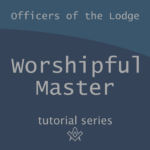 Officers of the Lodge - Worshipful Master Worshipful Master: the highest-ranking officer in the lodge, is the embodiment of wisdom and authority. The Worshipful Master guides the brethren on their spiritual path, representing the divine light that illuminates the Masonic quest for knowledge and self-discovery. |
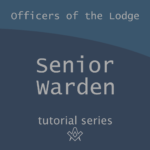 Officers of the Lodge - Senior Warden Senior Warden: embodies the essence of strength and stability within the lodge. As the pillar of support for the Worshipful Master, the Senior Warden symbolizes the fortitude required on our spiritual journey, inspiring us to persevere in the face of adversity |
 Officers of the Lodge - Junior Warden Junior Warden: Ensuring the well-being of the brethren during the lodge's hours of refreshment. Representing the virtue of temperance, the Junior Warden reminds us to find balance in our lives and cultivate moral discipline in our pursuit of truth. |
 Officers of the Lodge - Deacons Deacons: The messengers and intermediaries within the lodge. Representing the communication between the material and the spiritual realms, Deacons symbolize the importance of transmitting knowledge and wisdom as we strive for personal growth and enlightenment on our Masonic journey. |
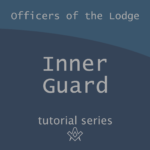 Officers of the Lodge - Inner Guard Inner Guard: Is the first line of defence against unworthy intruders, the Inner Guard represents our inner conscience and the personal responsibility we have to safeguard the integrity of our spiritual journey. |
 Tyler: The significance as the protector of the lodge's secrets and harmony. Tasked with guarding the entrance, the Tyler symbolizes our spiritual and moral boundaries, ensuring only worthy candidates are allowed into the sacred space of Freemasonry's teachings and rituals. |
masonic knowledge
to be a better citizen of the world
share the square with two brothers

click image to open email app on mobile device



